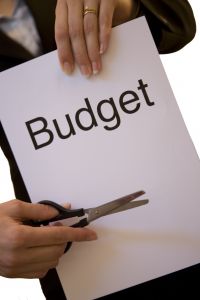Big Buffett bet
Big Buffett bet
In 2002 Buffett made a very public $12 billion bet against the dollar. He raised the amount to $20 billion as of January 2005, but cut back to $16.5 billion in June 2005 after losing nearly $1 billion in the first half. He closed the account in August 2008. Since Buffett made the forex trades in the name of his publicly traded company, Berkshire Hathaway, forex gains and losses were reported quarterly. Sometimes the quarterly outcome was a giant gain ($2.96 billion in Q2 2004) and sometimes it was a loss ($926 mil-lion in the first half of 2005). Over the period of the Buffett bet, sometimes sentiment toward the dol-lar was, in fact, negative because of the twin deficits, but not all the time. During the period Buffett’s anti dollar trade was garnering so much press (2002 to 2008), the Euro did, in fact, move from $.8892 (Jan. 2, 2002) to $1.5948 (July 16, 2008) — an 80-percent gain, one of the bigger trends in forex. But if you examine daily summaries of what professional traders reported were the factors inspiring their trades, you will seldom see the trade deficit or budget deficit. The twin deficits were considered a background factor more than the key mover. In fact, at the time traders were talking about more compelling hypotheses, such as relative real interest rates, intermarket relationships, and the carry trade.
If traders did not copy Buffett on the basis of his ideas, why did they trade as though they did? We postulate Buffett set the stage for positional bias. Actually, there were many other big names in the press talking the dollar down, so we are using Buffett as a proxy for all of them. In the trader’s mind, once your prime customers give you the direction, you don’t need to accept their values; you just have to follow the trend. In fact, if you had used a simple moving average analysis, you could have copied the Buffett results almost exactly.
Here’s the setup: Buy when the 55-day exponential moving average (EMA) moves above the 100-day EMA and/or the 100-day EMA moves above the 200-day EMA. He uses weekly data, with the 55-day EMA becoming the 11-week EMA, the 100-day becoming the 20-week EMA and the 200-day becoming the 40-week EMA. The buy/sell signals line up almost exactly to the public information about Buffett’s trades. Table 1 summarizes the EMA crossover signals.
Returning to the reason a looming sovereign default is failing to depress the Euro, who is the prime customer? It may or may not be China, with all its talk of needing to diversify, but it doesn’t matter. If enough prime customers think reserve diversification makes sense and is inevitable, they buy Euros and create positional bias among traders. Traders don’t care one way or the other; their job is to make a profit.
We need to know the news of the day, and it’s helpful to know some forex history regarding why and when big-picture factors move the market, but in the end the key to trading success lies in perceiving the directional bias of the big players’ prime customers. If the prime customers chose to disregard that defaulting currencies historically devalue and to place a higher value of the diversification story, there’s no point in arguing. The wise move is to go with the flow.



